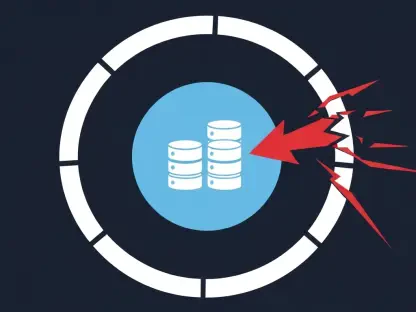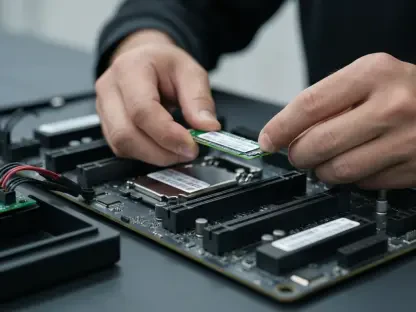In a financial landscape where stablecoins are increasingly viewed as a cornerstone of digital transactions, Circle has introduced a game-changing solution with Arc, a Layer-1 blockchain unveiled on August 12, 2025, designed to confront the deep-seated challenges of stablecoin adoption. Arc offers a bespoke infrastructure tailored for enterprises, fintechs, and the wider digital economy. Traditional financial systems often wrestle with fragmentation, opacity, and limited access, while even public blockchains struggle with issues like unpredictable gas fees and privacy gaps. Arc steps into this fray with a promise of scalability and security, aiming to smooth the path for stablecoins to integrate seamlessly into mainstream finance. By focusing on the specific needs of stablecoin transactions, this platform could herald a significant shift, addressing barriers that have long hindered broader acceptance and paving the way for innovative financial workflows.
Arc’s Unique Approach to Stablecoin Challenges
Purpose-Built for Stablecoin Finance
Arc distinguishes itself from the crowded blockchain space by zeroing in on the unique demands of stablecoin applications, rather than serving as a catch-all platform. General-purpose blockchains often fall short when it comes to the specialized requirements of stablecoin finance, such as handling fragmented liquidity or providing robust enterprise-grade support. Arc’s architecture is meticulously crafted to tackle these pain points head-on, ensuring that transactions are not only efficient but also aligned with the operational needs of large-scale financial entities. This targeted approach could prove instrumental in driving stablecoin adoption across industries, as it eliminates many of the inefficiencies that have deterred institutions from fully embracing digital currencies. By prioritizing stablecoin-specific functionality, Arc sets a new benchmark for how blockchain technology can be adapted to meet niche financial demands.
Beyond its foundational design, Arc’s focus on stablecoin finance extends to addressing systemic issues that have plagued both traditional and decentralized systems. Fragmentation in liquidity pools often creates barriers to seamless transactions, while the lack of enterprise-level tools limits scalability for businesses. Arc counters these challenges by embedding features that streamline financial workflows and ensure compatibility with institutional needs. This isn’t just about creating another blockchain; it’s about crafting a solution that bridges critical gaps in the current ecosystem. For enterprises looking to integrate stablecoins without compromising on reliability or efficiency, Arc presents a compelling case. Its emphasis on solving real-world problems positions it as a potential catalyst for transforming how stablecoins are perceived and utilized in global markets.
Innovative Features for Stability and Efficiency
One of Arc’s standout innovations is the use of USDC, a dollar-pegged stablecoin, as native gas for transaction fees, a move that directly addresses the volatility often associated with cryptocurrency costs. This design choice offers treasury teams a level of predictability that is rare in the blockchain space, allowing for precise budgeting without the fear of sudden price swings in fee structures. Additionally, Arc incorporates an institutional-grade foreign exchange engine, enabling seamless currency conversions and cross-stablecoin transactions through on-chain settlements. These features collectively enhance global payment systems by reducing friction in international dealings and improving liquidity management. Such advancements signal a shift toward a more stable and user-friendly blockchain environment, particularly for those navigating complex financial operations.
Another layer of Arc’s appeal lies in its commitment to speed and reliability, powered by the Malachite consensus engine, which achieves sub-second transaction finality. This rapid settlement capability is a critical asset for enterprise applications where delays can translate to significant losses or inefficiencies. Complementing this is Arc’s opt-in privacy feature, which allows users to shield specific balances and transactions, striking a balance between regulatory compliance and the inherent transparency of blockchain technology. This thoughtful integration of privacy and speed ensures that Arc isn’t just fast, but also adaptable to the stringent requirements of regulated entities. By combining these elements, Arc establishes itself as a platform that prioritizes both operational efficiency and user confidentiality, setting a high standard for what stablecoin-focused blockchains can achieve.
Bridging Traditional and Decentralized Finance
Versatile Applications for Financial Innovation
Arc’s potential to revolutionize financial systems is vividly illustrated through its wide array of use cases, which span multiple sectors and address long-standing inefficiencies. From facilitating low-cost, instant cross-border payments to enabling the settlement of tokenized assets in capital markets, Arc provides a foundation for transactions that are both swift and economical. These applications are particularly significant in a world where traditional cross-border transfers can take days and incur hefty fees. By leveraging stablecoins for such operations, Arc reduces both time and cost barriers, opening up new possibilities for global commerce. This versatility underscores Arc’s role as not just a technological tool, but a transformative force capable of reshaping how financial interactions occur on a worldwide scale.
Further expanding its impact, Arc supports innovative financial models like on-chain credit systems that incorporate off-chain trust signals and automated machine-to-machine transactions for programmatic payments. These use cases highlight how Arc can bridge the gap between conventional financial practices and the emerging decentralized economy. For instance, automated commerce powered by Arc could enable seamless, trustless interactions between devices, streamlining processes in industries like logistics or retail. Similarly, the ability to build credit systems on-chain introduces a layer of transparency and accessibility that traditional systems often lack. Such forward-thinking applications position Arc as a pivotal player in fostering financial innovation, offering solutions that cater to both established institutions and cutting-edge decentralized initiatives.
Integration with Circle’s Ecosystem
Arc’s seamless integration with Circle’s established ecosystem marks a significant advantage, ensuring compatibility with a suite of trusted tools and stablecoins like USDC and EURC. This connectivity includes access to the Circle Payments Network, token minting capabilities, smart contracts, wallets, and cross-chain transfer protocols. Such integration means that enterprises and developers can leverage Arc without needing to overhaul their existing infrastructures, reducing adoption friction. This compatibility is a strategic move, as it allows Arc to tap into a pre-existing user base and infrastructure, enhancing its appeal to global businesses already familiar with Circle’s offerings. The result is a platform that feels both innovative and accessible, a rare combination in the fast-evolving blockchain sector.
Equally important is Arc’s emphasis on interoperability within the broader multichain landscape, ensuring it doesn’t operate as an isolated entity but as part of a larger, interconnected system. By aligning with standards and protocols that facilitate cross-chain interactions, Arc enables users to move assets and data across different blockchain networks with ease. This focus on interoperability is crucial for preventing the silos that often fragment the decentralized space, instead fostering a cohesive environment where stablecoin applications can thrive. For businesses and developers navigating multiple blockchain ecosystems, Arc’s design offers a unified approach that simplifies complexity. This interconnectedness not only amplifies Arc’s utility but also positions it as a key player in the ongoing evolution of digital finance, where collaboration across networks is increasingly vital.
Fostering Collaboration and Developer Freedom
Open-Source Commitment and Community Engagement
Arc’s release under a permissive open-source license represents a bold commitment to transparency and community involvement, setting it apart in a field where proprietary systems are common. This approach allows developers, researchers, and institutions to access, inspect, and contribute to Arc’s core software, fostering an environment of trust and independent verification. By inviting such widespread participation, Arc ensures that its development isn’t confined to a single entity but benefits from diverse perspectives and expertise. This openness is particularly valuable in building long-term confidence among users, as it demonstrates a willingness to prioritize collective progress over exclusive control. The potential for community-driven enhancements could accelerate Arc’s evolution, making it a truly collaborative endeavor.
Moreover, Circle’s market-neutral stance with Arc further amplifies its role as a unifying force within the financial technology sector, encouraging partnerships across fintechs, banks, stablecoin issuers, and payment providers. Unlike platforms that seek to dominate through proprietary ecosystems, Arc positions itself as a shared infrastructure that benefits all stakeholders. This philosophy of collaboration extends to its phased rollout strategy, with testnets starting this year and a mainnet beta planned for 2026, allowing for real-world feedback to shape its trajectory. Such an inclusive approach not only mitigates the risk of alienation among potential users but also builds a foundation for widespread adoption. By prioritizing partnerships and community input, Arc aims to create a ripple effect of innovation that reshapes stablecoin finance on a global scale.
Balancing Regulation with Innovation
Arc strikes a delicate balance between catering to the stringent demands of regulated institutions and preserving the open, composable environment essential for decentralized development. This dual focus is evident in its design, which accommodates the compliance needs of enterprises while offering the flexibility that developers crave for building novel applications. For regulated entities, features like opt-in privacy provide mechanisms to meet legal and confidentiality standards without compromising on blockchain’s inherent transparency. Simultaneously, Arc’s structure supports the experimental nature of decentralized finance, ensuring that innovation isn’t stifled by overly restrictive frameworks. This equilibrium makes Arc a rare platform that can serve as a bridge between two often opposing worlds.
Adding to this balance is Arc’s compatibility with the Ethereum Virtual Machine (EVM), which allows developers to utilize familiar tools and programming languages while integrating with the broader blockchain ecosystem. This compatibility reduces the learning curve for those already versed in Ethereum-based development, making Arc an accessible entry point for creating stablecoin-focused solutions. Furthermore, it ensures that Arc doesn’t exist in isolation but can interact with other networks, enhancing its utility in a multichain world. For developers, this means greater freedom to innovate without starting from scratch, while for enterprises, it offers reassurance of working within a well-established technological framework. This harmonious blend of regulation-friendly features and developer-centric design positions Arc as a forward-thinking solution with the potential to drive significant advancements in digital finance.
Reflecting on Arc’s Path Forward
Looking back, Arc emerged as a pioneering force in stablecoin finance, addressing critical barriers with features like USDC-based gas fees, rapid transaction finality, and seamless currency conversion tools. Its thoughtful integration of privacy options and compatibility with Circle’s ecosystem demonstrated a nuanced understanding of the diverse needs within the financial sector. The commitment to open-source principles and a market-neutral stance fostered an environment of trust and collaboration that resonated across industries. As Arc navigated its phased rollout from testnets to the mainnet beta in 2026, it laid a robust foundation for transforming how stablecoins were integrated into both traditional and decentralized systems. Moving forward, stakeholders should focus on engaging with Arc’s evolving platform, exploring its versatile applications, and contributing to its community-driven development to fully harness its potential in reshaping global financial workflows.









